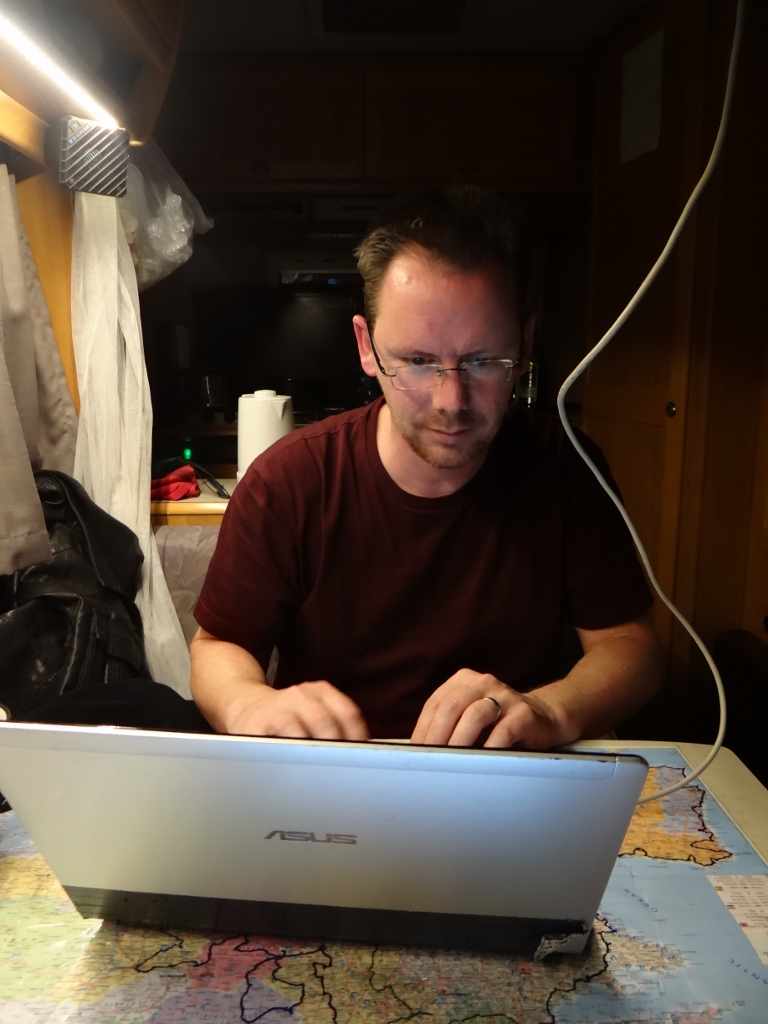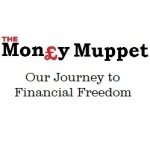First Timer’s Foray into the Stock Market
 This blog post about our first time investing in the stock market was originally written in March 2014 for our sister website – The Money Muppet. We set that site up in January 2014 as we embarked on our journey to financial freedom. The Money Muppet site no loner exists, so we’ve incorporated our financial journey into our travel blog.
This blog post about our first time investing in the stock market was originally written in March 2014 for our sister website – The Money Muppet. We set that site up in January 2014 as we embarked on our journey to financial freedom. The Money Muppet site no loner exists, so we’ve incorporated our financial journey into our travel blog.
Hello folks! I’m pleased to report we’re actually making progress on our strategy, even after just 6 months of being back home. Just to recap what we’re up to:
- We rather fancy (read as: I am fanatical about) the idea of being financially free by 50
- We know this is possible. Our own figures and those of others show it can be done
- Our basic strategy to achieve this is to amass an invested stash of £625k, from which we’ll earn enough rent/interest/dividends/capital gains to live at an average withdrawal rate of 4%, for ever (£25k per year)
- Our plan is to sink roughly half our stash in property, and half in the stock market, with a float of cash to keep us alive
Our thinking has moved on somewhat since we came up with this approach, as we’ve realised a few obvious things:
- The 4% rule is described quite nicely in a few places (like here, and in video here). It’s clear to us that once we finally quit the 8 ’til 5, our income’s going to wander about like a lost puppy as markets and interest rates rise and fall. We’ll need to adjust the way we live to cope with the fluctuations
- We’ve a decent-sized pension pot, which we’ll be able to start using when we’re 55
- We’ll probably work anyway, just not as much, and probably choosing to do some different stuff, so unless life boots us about, our £25k average will be more than enough to live on
So all in all, the plan lives! Which means we had to get started in the stock market. Nerves time.
We’ve both had shares in the past, with the energy company E.ON (our sometime employer) and with a few other companies. We’ve never bought these shares with much thought (at least I haven’t, maybe Ju spent more than 5 minutes deciding), and we’ve not got much invested in them. Our strategy now calls for us investing 100’s of thousands of our hard-earned into the things. BIG money, sick feeling.
Hmmm, choices:
- Bonds or shares?
- Which markets?
- Individual shares or funds?
- What about tax?
- Dividends or capital gains?
- Just how much risk are we willing to take?
This website lives as testament to the fact that I’m attempting to de-muppet myself financially. I want to learn, to understand exactly how the smoke-and-mirrors financial world works, so I’m in control. I’ve spent hours pouring over books and websites to make a call on what we should do. I’m loathe to hand over our future to a financial adviser who I can’t understand and maybe can’t understand me (we’re not exactly conventional these days).
This is the result; it’s most certainly not advice, it’s just a record of what we’re trying out:
- Bonds, which are effectively IOUs, are too low risk, low return. We’ll come back to them in the future, to reduce risk as we get closer to our retirement goal, but for now they don’t work for us
- Buying and selling individual shares is too risky for our level of experience (the Muppet level). However, having said that we have bought shares in Telecom Plus (the Utility Warehouse Discount Club), as we work for them part-time, and we think they’re a fab company who are seriously going places)
- Funds, which spread our investments out over many shares, are what we generally want
- We’re into this whole thing for the long term – our aim is to achieve financial freedom rather than buy a yacht – so we’ll buy funds and hold them for the long term. This will help smooth out market crashes, reduce trading fees, and help us sleep at night
- Few folks seem to think actively-managed funds are a good idea (ones where an individual/team of people try to beat the market by altering the mix of shares all the time). The costs are high, and chances of success limited
- So we’re into passive (un-managed) funds, ones which just try and track a particular market, and don’t snaffle more than 0.29% a year in fees
- This lead us to low-cost Exchange Traded Funds, ETFs, and to a name which pops up time and again: Vanguard
- We also decided we wanted ETFs invested in actual shares (physical), rather than the ‘synthetic‘ ones which use complex financial instruments I can’t yet understand
So that’s where we’ve gone. We’ve set up 2013-14 Stocks & Shares ISAs with our bank, First Direct. We’ve set up trading accounts and, feeling nervous, a wee bit dazed and excited at the same time, placed some orders. Ju’s bought a wedge of Telecom Plus shares, and I’ve placed orders for 4 different Vanguard ETFs. Only one of the orders went though, as you have to state a maximum price you’ll pay per share, and 3 of the ETFs went up in value above this limit as soon as the market opened. We’ve set the orders again today so they should hopefully go through on Monday. Each trade costs £11 with First Direct.
Which ETFs? Through a certain degree of finger-in-the-air guess work, reading up and gut feeling, we went for equal value stakes in:
- Vanguard FTSE All World ETF (VWRD)
- Vanguard Standard&Poor 500 ETF (VUSA)
- Vanguard High Yield ETF (VHYL)
- Vanguard FTSE 100 ETF (VUKE)
I’ve set up a Google Spreadsheet which tracks the capital value of each fund and reports back how much we’ve lost or gained on each chunk of shares bought (so need to log into various trading accounts). All we can do need to do now is watch and wait, checking back from time to time (yeah, like every 5 minutes at the moment – we’ve got to chill out) to see how they perform in terms of capital gain/loss and dividends. I’ll continue to research of course, but I’m relieved we’ve gotten started on the whole, erm, gamble.
Next year, all being well, we’ll do more stock market investing using the knowledge gleaned from this ETF trial. We’ll not buy all in one go as we have this year (which we did as the 2013-14 ISA deadline’s fast approaching, knee-jerk, I know!). We’ll more likely invest each month to get the potential benefits of pound cost averaging.
The other half of the gamble, the property side, is also shifting along, albeit a little more slowly. I’ll pop up a post about it shortly. Time to go get a cuppa and take a walk in the spring sun for now.
Wish us luck folks! Cheers, Jay
Previous: The Ramblings of a Muppet
Next: Keeping Sight of the Blinding Light






Leave a Reply
Want to join the discussion?Feel free to contribute!